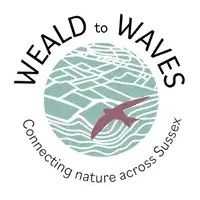60 harvests left: what’s the solution?
By Weald to Waves - 05 February 2023
The UN estimates the planet has 60 harvests left, based on the current rate of soil depletion.
Taking this shocking fact in hand, there is an urgent need to look at how natural ecosystems can provide solutions to reverse the damage done.
Savills has produced a spotlight report on Nature-based solutions. This lays out a pathway to investing in nature as a means of tackling some of the toughest challenges facing society.
“The complex and interrelated impacts of the biodiversity and climate crises are now being felt in our fields and on our doorsteps”, says Emily Norton, Head of Rural Research
The report looks at how multiple nature-based solutions - like renewable energy generation, habitat enhancement, regenerative agriculture, and native woodland creation - can be delivered in one landscape, such as the Weald to Waves corridor. Good management of these ‘ecosystem services’ opens up a new realm of opportunities for rural economies.
The report says: ”Business is starting to look at the investment case for nature in a different way. Economic growth has been reliant on the extraction of resources from nature, yet natural systems can provide valuable services as well as resources. Increasingly, investment in these services, known as nature-based solutions, are proving to be a cost-effective method of tackling the environmental challenges we face.”
Echoing increased extreme weather across the planet, Sussex has been at the keen edge of both flooding and drought in the past few years and our challenges with water pollution have increased. The loss of our wildlife populations is far harder to see day by day but biodiversity is continuing to decline all around us.
As the report states: “The complex and interrelated impacts of the biodiversity and climate crises are now being felt in our fields and on our doorsteps.”
Weald to Waves is supporting farmers and land managers to research and understand how best to integrate with emerging opportunities to harness and protect nature-based solutions. There have been promising signs from recent government announcements around the Environmental Improvement Plan. But there are fewer details on the funding behind those goals. Without rapid investment in nature and the active engagement of our land stewards, we will continue the countdown toward our final harvest.

